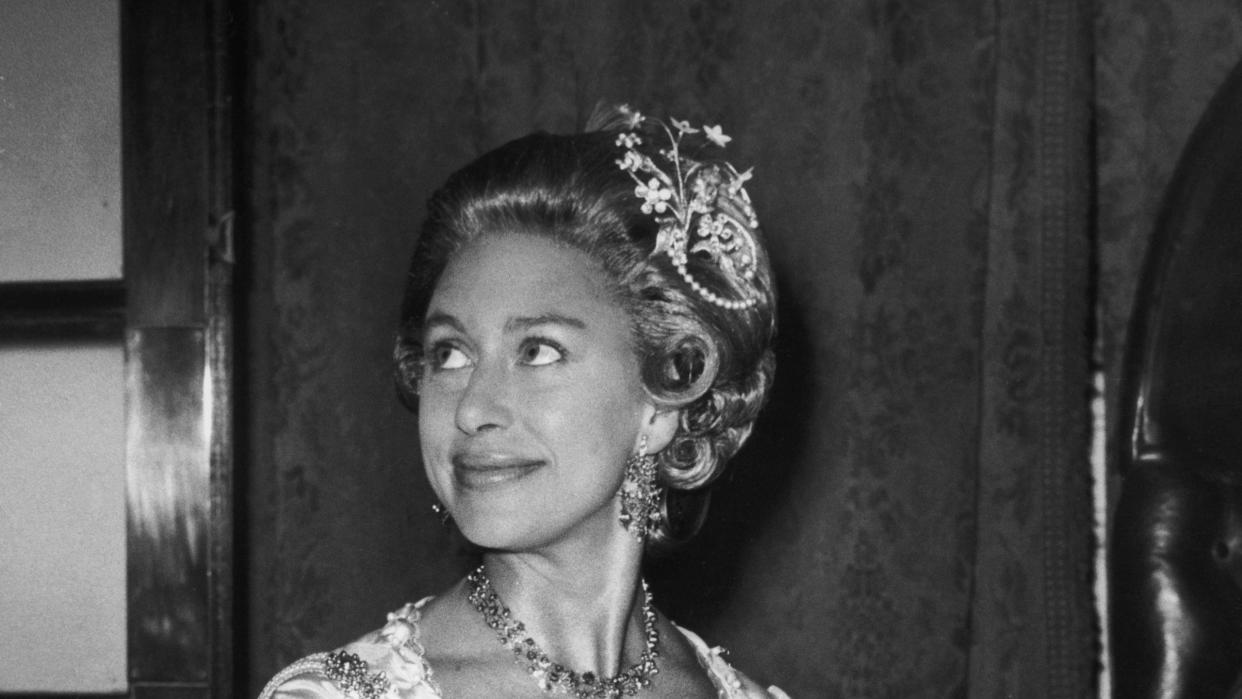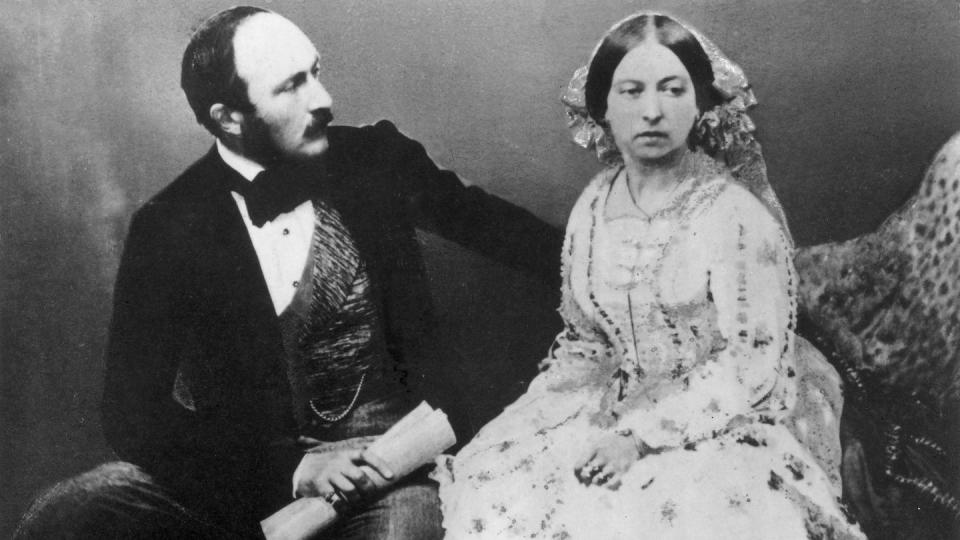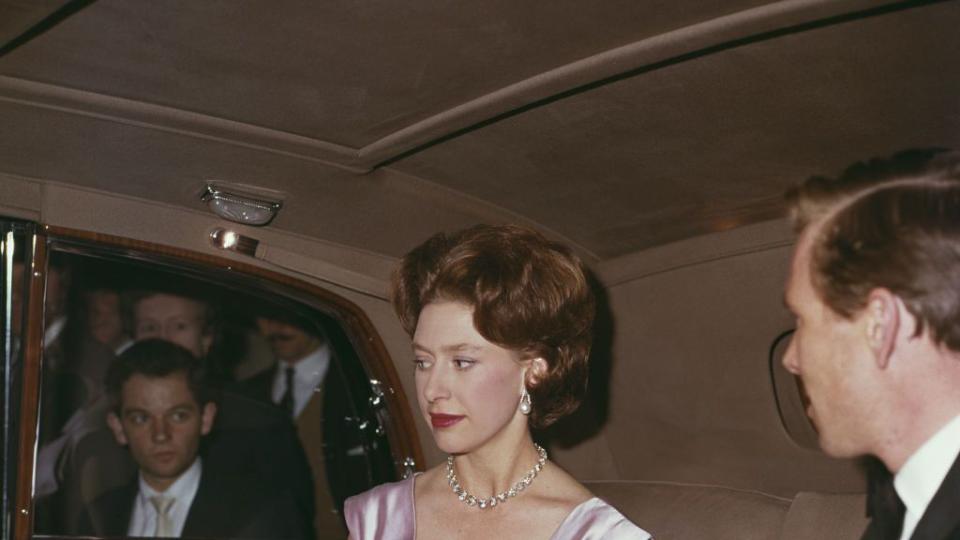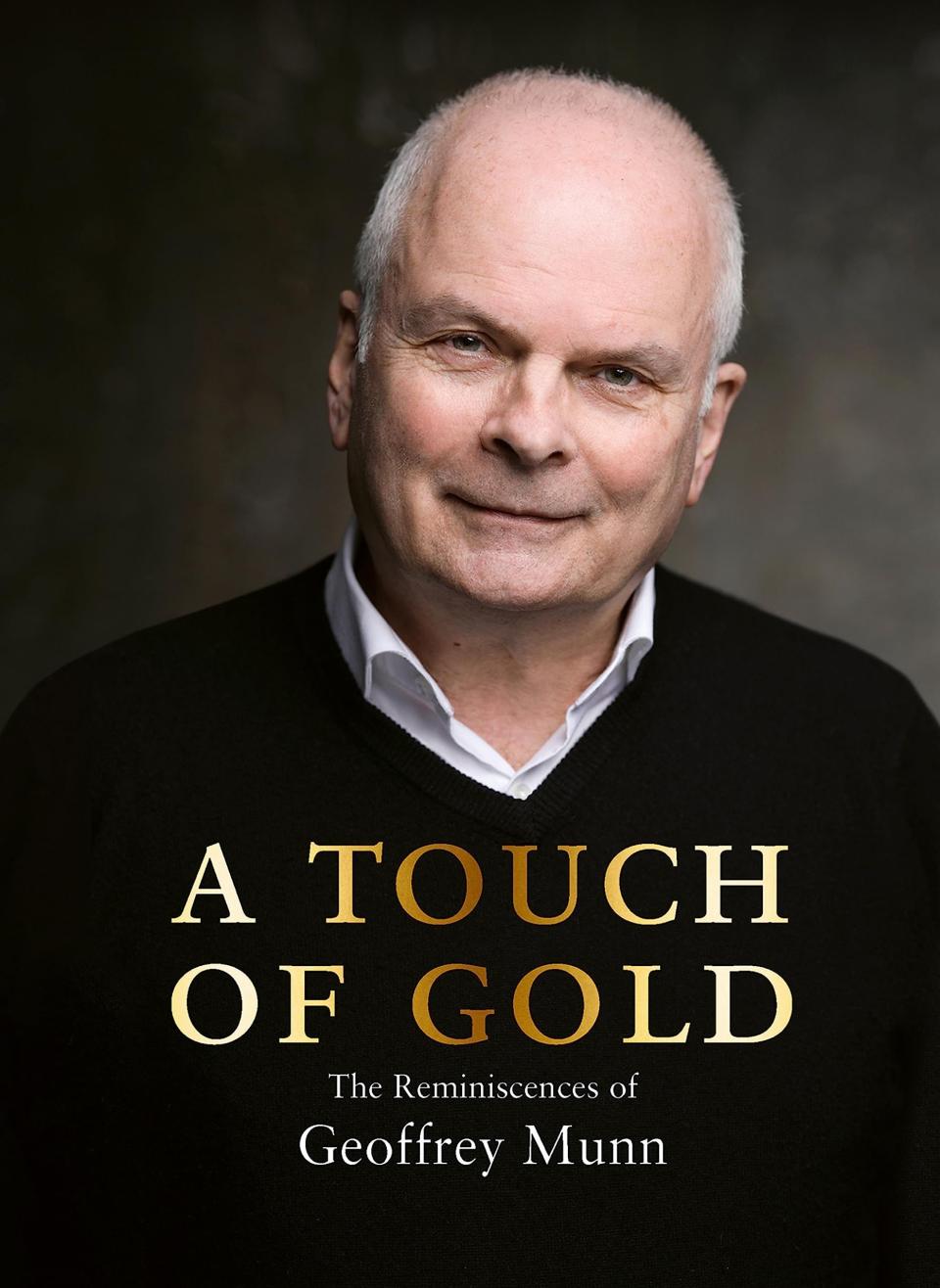The Way to Princess Margaret's Heart? Jewelry, Of Course.

- Oops!Something went wrong.Please try again later.
- Oops!Something went wrong.Please try again later.
"Hearst Magazines and Yahoo may earn commission or revenue on some items through these links."
December 14, 2011 was a cold, cold day and a bitter wind cut through Kensington Gardens. I had been invited to a service to mark the sesquicentennial anniversary of the death of Albert Prince Consort (1819–61); fittingly, the location was the resplendent Albert Memorial.
Given the gravity of the occasion and the possibility that some of the Prince’s myriad descendants would be present, I decided on a dark suit, white shirt, even darker tie, black shoes and a black three-quarter length coat.
As it turned out, the service was disappointingly small and the congregation might, at best, be described as intimate. I doubt there were more than 15 of us gathered in the Prince’s honor but it did include the Mayor of the Royal Borough of Kensington and Chelsea, clothed in her red velvet robes, lace jabot and elaborate gold chain of office. The officiating priest offered apologies on behalf of The Queen, The Duke of Edinburgh, The Prince of Wales and The Dukes of Gloucester and Kent. We then learned this was just the beginning of an embarrassingly long list of absentees, including Albert’s descendants both from home and abroad. Apparently, the Landgrave of Hesse and by Rhine regretted his absence, as did His Imperial Highness the Prince of Prussia, and there were probably many more of Albert’s family who, for one reason or another, had offered their apologies.

Victoria and her “beloved Albert” were married on February 10, 1840 and had nine children. It is a startling statistic that the offspring of this love match between first cousins number nearly 1,000 people alive and kicking today. Despite the Prince’s fecundity, attendance at this curious little commemoration suggested Albert’s memory was very much on the wane.
The priest, undeterred by his scant congregation, led prayers for His late Royal Highness and then a pathetically inadequate tribute to Albert’s many achievements was laid at the foot of his colossal effigy, towering above every previous hero of the arts and sciences, and entirely covered in pure gold. It was a small wreath of plastic laurel leaves, hardly bigger than a side plate.
At the end of the short service, the congregation was invited to the Albert Hall for a glass of warming Madeira. By then I was as cold as a brass monkey and was glad of my formal, if faintly saturnine, attire. In the process of crossing Kensington Gore, a woman suitably dressed for mourning, the rim of her felt hat jabbed through with a stiff black feather, approached me. Although hardly in the first flush of youth, she was still beautiful and her refined features and cut-glass accent made me wonder if she was one, if not the only one of Albert’s descendants at this tragic little service. After the usual exchanges about the cold and the wind, she turned to me and said: “Forgive me, but I simply have to ask. You look so familiar to me. Are you the Mayor’s chauffeur?” I was able to reply: “Well no. In fact, I never learned to drive and I doubt I ever shall.”

What my patronizing new friend had presumed was not a fact, but neither was it was entirely a fiction. I was the managing director of Wartski but no matter how famous this family firm had become, I am, and always will be indelibly marked out as “trade.” In years gone by, this would certainly have precluded me from many aspects of what used to be described as society; it might even have prohibited me from the mournful occasion described above. However, following two world wars, the old order had virtually collapsed and even the most vociferous adherents found traditional levels of snobbery impossible to maintain. Inherited rank had been superseded by fame and in our own time it is celebrity that rules almost everywhere.
History shows that the British royal family has always been conscious of its standing in regard to duty, but it has also always been remarkably inclusive. Queen Victoria’s friendship with her servants is too well known to warrant elaboration here, but it is worth noting that it encompassed not only rank but race.
Since time immemorial, the immediate indicators of royal status have been the finest colored silks, exotic feathers and furs worked up by skillful couturiers to rich and elegant effects and even today not much has changed. Jewelry is still the highest form of dress, and it remains the most powerful royal emblem of them all. Before photography and the dizzy electronic media of today, the monarch’s image was virtually unknown to the populace and jewelry was not just a prop but an absolute essential to the successful stage management of sovereignty.
Wartski’s part in all this, as a jeweler and specialist in Fabergé, meant the firm’s relationship with the British Royal Family has been an enduring honour. In fact, it spans six generations, beginning with King Edward VII and continuing with the Catherine, Princess of Wales, whose wedding ring was made from Welsh gold given by The late Queen. Of all the luxury trades, jewelry in particular is very personal and inevitably implies a close connection between supplier and patron.
During my part in that unique relationship, I have observed the great sense of duty that prevails amongst the senior members of the royal family, which in some cases is derived from a profound religious conviction. For instance, it is little known, and certainly never reported, that Princess Margaret maintained a deep sense of Christian faith. I came to realize this by rather a circuitous route in 1980, during the preparation of my book about Castellani and Giuliano.

A Touch of Gold: The Reminiscences of Geoffrey Munn
amazon.com
Earlier that year, I had heard about the Princess’s small collection of Giuliano jewelry and so I wrote to her private secretary, Lord Napier and Ettrick (1930–2012) to ask if I might see it. I never doubted permission would be granted and when indeed it was, I set off on the bus to Kensington Palace dressed in a slate grey suit and flared trousers, my hair fashionably long and sporting an equally fashionable moustache. The journey gave me plenty of time to imagine what might happen next. I had never visited Christopher Wren’s historic palace before and that, together with the sight of the jewelry that would be laid out for me in an anteroom, was likely to be quite thrilling enough, but I was wrong.
The Princess was a genuinely artistic person with a great sense of curiosity about every aspect of life, particularly music and art. Luckily for me, she wanted to know more about my particular enquiry. On my arrival, her lady-in-waiting, Elizabeth Paget took me into the hall past the Princess’s portrait by Pietro Annigoni (1910–88) and then a pair of lacquer torchères in the form of turbaned moors ushered us through double opening mahogany doors into a long reception room, papered in the Princess’s favorite color: blue. To my great surprise, I was told this was where Her Royal Highness would join me shortly. The heady scent from a vase of hyacinths filled the air. Whilst waiting, I noticed an ottoman chair in the center of the room but there was nowhere to sit because it was strewn with anthologies of prayers. They were to have a remarkable resonance for me, but more of that later.
Excerpt taken from A Touch of Gold: The Reminiscences of Geoffrey Munn published by ACC Art Books.
You Might Also Like

